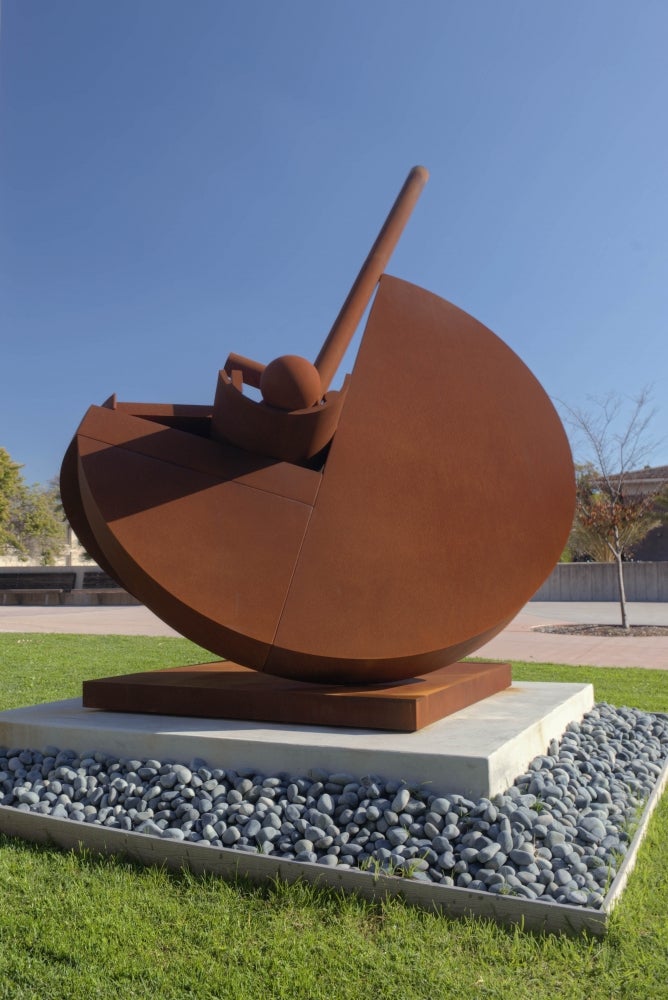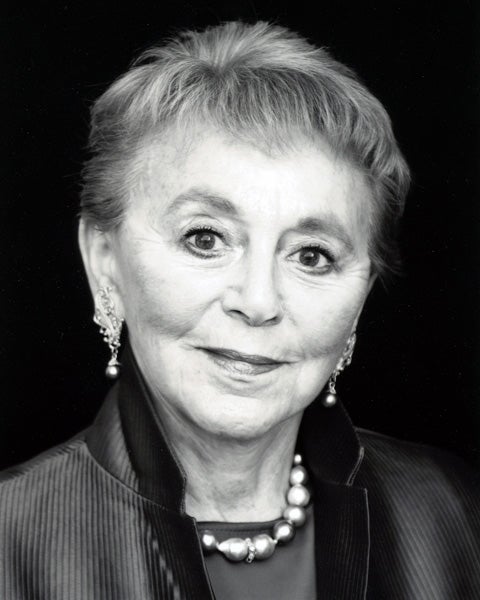‘Life Evolves’


In the spring of 2013, humanitarian and activist Eva Haller received the inaugural Forbes Magazine Award for Excellence in Mentoring. That occasion, which happened to coincide with her 83rd birthday, proved to be something of an a ha moment.
“Not until that award did I ever think about or analyze what do I love to do and how do I do it,” Haller said recently. “But mentoring I’ve been doing all my life and I love it. Watching young people create something new that is important, and change their lives, is my passion. I think of myself as an incubator, and it’s really a wonderful role to have in life.”
Count UC Santa Barbara among those who have benefitted.
A longtime trustee of the UC Santa Barbara Foundation, Haller is a devoted campus benefactor, in mentorship and money alike. Over three decades — this is her 30th year as a trustee — the breadth of her support has touched academic departments including anthropology, religious studies and dance, as well as the library and the College of Letters & Science. With a special love for all things art, she has given extensively to UCSB Arts & Lectures and the campus’s Art, Design & Architecture Museum.
To the latter, she and her husband, Yoel Haller, have just made a major donation: a monumental sculpture by celebrated California artist Fletcher Benton, along with funds for its conservation. This is in addition to support for the museum’s Benton exhibition and related educational outreach.
“The Benton sculpture gives us a work of the highest quality, a work that is monumental in scale and a work that says loudly and clearly, ‘This is an art museum,’” museum director E. Bruce Robertson said of the 9-foot steel structure, ‘Folded Circle T and Arc,’ installed between the museum and the Arts building. “We chose that space very carefully to highlight it. This is the most significant sculpture that the museum has acquired in 30 years, and easily one of the most significant works of art, period, that we have acquired in that time. The fact that it’s a work of art that is so visible makes it even more important.
“Eva and Yoel’s gift is a way of advancing the mission of the university as a complete intellectual and scholarly and teaching landscape, in the sciences, the humanities and the arts — all at comparable levels of excellence,” Robertson added. “The campus has an extraordinary history in producing artists and promoting and doing research on the arts. UCSB has produced some very important and significant sculptors, like Richard Serra, who is an alum.”
‘Ruins and Beauty and Magic’
Around the time Haller (then Eva Roman) joined the UCSB Foundation board, she created the Murray Roman Art Fund, an endowment in honor of her first and late husband, with whom she was introduced to UCSB in the early 1980s. The fund for graduate art students currently sponsors a curatorial fellow at the museum who helps to train undergraduate students.
It’s mentoring by way of philanthropy, and vice versa. A drive to help people and causes she believes in is what prompted Haller to give in the first place.
And art — for her as it was for Murray Roman — is one of those causes.
“We have to celebrate liberal arts because that is our human background that came to us before technology,” Haller said. “I have a deep commitment to the arts and to liberal arts and to art history because my late husband so much believed in education to be well rounded and that young people should feel the arts — the music, the paintings, the sculpture — and understand the world through its history. The history of the world is the ruins and the beauty and the magic of what humans have created over the centuries.”
Ruins and beauty and magic. Elements all of Haller’s own story, too.
Building a Monument
Born and raised in Hungary, Haller was barely a teenager when German forces occupied the country during World War II and the Holocaust. As the situation in Budapest became increasingly dire, her parents hid her by sending her to a Scottish mission that Haller recalled as “a fancy boarding school that slowly became a refuge for Jewish people.” She was there for only two months — and it saved her life.
Her brother was not so lucky. He had been part of the Hungarian resistance, spending nights making and distributing anti-Nazi leaflets. For his activities he was arrested, then released and, ultimately, killed.
The older sibling who Haller characterized as “a true idealist” is a forever inspiration, she said, a lightning rod for her own activism even now, some 70 years later.
“So much of who you are is the example you get from your family,” Haller said. “My brother was deeply involved in saving the world … and he was killed trying to save four of his comrades as they were escaping from the Nazis. I had tremendous pain and misery and suffering and deprivation because he died. I somehow always felt that if I could build a monument to who he would have been, had he been, and I often thought about who would he be today, what would he have accomplished, how would my life have been different if I had him to guide me?
“He died for what he believed in,” she added. “I’m not giving my life, but I can give my time and support.”
‘Life Evolves’
Very soon after arriving in New York in 1952, Haller’s inherent activist spirit began to show itself. Women’s rights, civil rights, anti-war protests: “I became a passionate marcher,” she said. She also worked and put herself through school, ultimately earning both bachelor’s and master’s degrees in social work.
Fast forward 60-some years and she has built that monument, championing for underserved populations, women, children, arts, education and more. Today Haller serves on the boards of multiple nonprofit and philanthropic organizations, including Free the Children, Sing for Hope, Women for Women International and the Jane Goodall Institute.
And the UC Santa Barbara Foundation.
Haller was asked to join the trustee board after the death of her first husband. They had enjoyed a good relationship with then-chancellor Robert Huttenback, whom they met the first time they set foot on campus, for an architectural show at the art museum. The couple made their first big gift of artwork together, and Haller never looked back.
The newest gift, the Fletcher Benton piece, is meant to serve as something of an anchor, a totem, for the breadth of visual arts at UCSB. It is bold and graceful, evoking passion and fortitude — much like the woman responsible for getting it here.
“When I think about the things I got involved in when I came to this country, they were just instinctual,” Haller said. “You know, life evolves. I can’t ever claim that I sat down and made a strategic plan about what Eva Haller’s life would be. There were too many imponderables — too much sadness, death, misery, world wars and whatever. I just go with the flow. We all go with the flow, but I just think that we have a core and the core gets established sort of early in life and if you somehow remain true to your core — even if it’s not something you work on — it’s an instinctive thing. I’m not a very intellectual person, I’m an instinctual person. I grab hold of that which is viscerally mine. So I can never give advice to people about how to achieve where I am in life because that’s not who they are.
“Life is all about passion,” she continued. “What is your passion? If your passion is sharing and giving and charity and those kinds of things that make your endorphins grow, then that’s what you do. And if that’s the direction you’re going in, I’m pleased to help, if I can, with any suggestion, connection or introduction. That’s who I am.”



